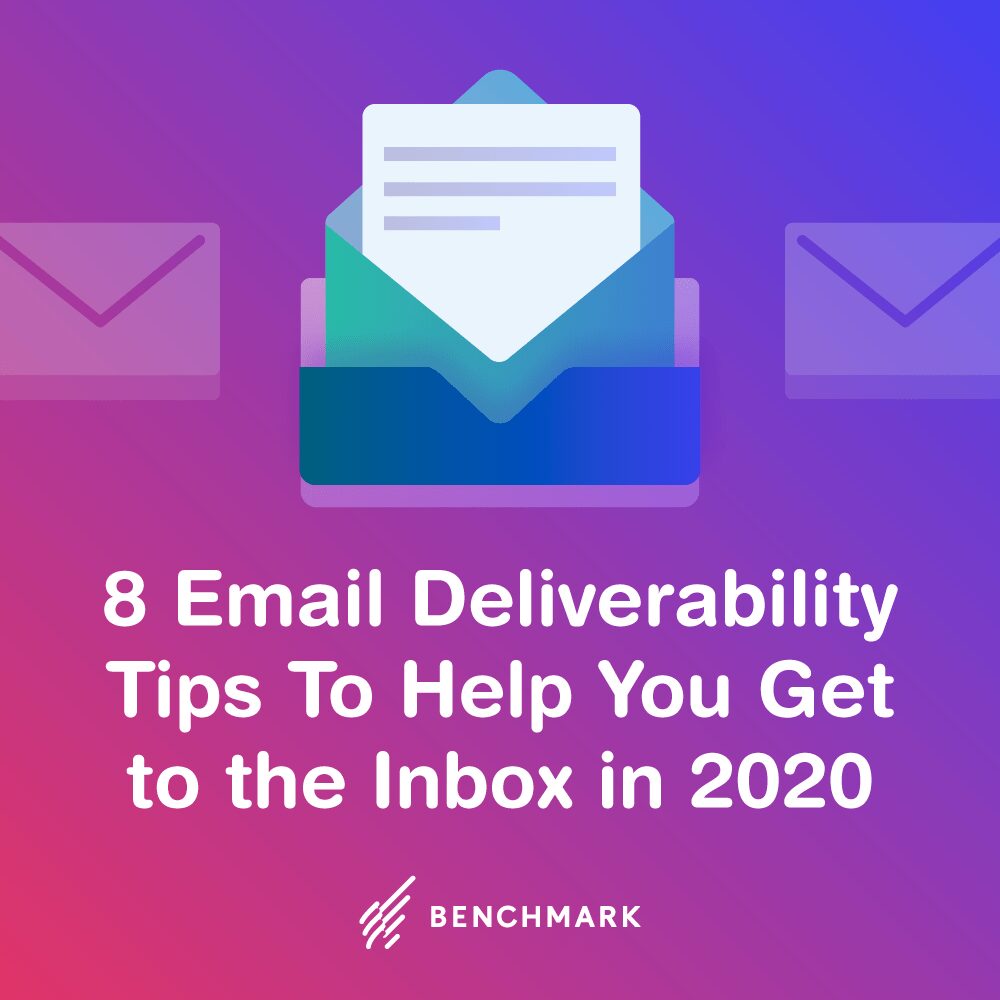Wouldn’t it be great if every email you sent actually ended up in your intended recipients’ inboxes? While that’s certainly the goal when it comes to email marketing, making your way into someone’s inbox is often a lot easier said than done — especially with today’s rigorous spam filters.
Okay, we know what you’re thinking: But I’m not sending spam. And while we get it, your standard email provider is usually more likely to err on the side of caution when choosing which messages make their way into the inbox and which messages fall into the dreaded spam box. It’s important then to optimize your emails so that they don’t set off any red flags, and we’ve got just the tips to help you do that. Read on for eight email deliverability tips that will help your marketing emails end up where you want them to.
1. Focus on Opt-In Subscribers
It’s not just your conversion rates that suffer from emailing recipients who have not opted in to hearing from you. Email providers have pretty strict terms of service, especially when it comes to business communications. If you rent, buy, or otherwise obtain email addresses without direct permission, there’s a strong chance you’re going to get flagged as spam.
2. Clean Up Your Contact List
Emails sent to non-deliverable addresses will result in a bounce back, and your bounce rate is one of the determining factors that email providers and internet service providers look at when qualifying your message. Fortunately, most email marketing providers make it easy to see which addresses are resulting in bounced messages. Be sure to check your contact list regularly for non-deliverable addresses and delete them so you’re not inadvertently increasing your bounce rate.
3. Target Your Messages
Today’s consumers want to hear from brands, but they also want those messages to be personalized to their needs and preferences. Instead of mass-messaging your entire contact list with an email (which could end up in people flagging your message as spam or flat-out unsubscribing from future communications), segment your contact list so you only send recipients messages that they really care about.
4. Authenticate Your Domain
Let email providers know that you’re actually who you say you are by authenticating your email domain. Taking this important step will help you jump the hurdles that providers put in the way of messages to ensure that they’re warranted, wanted, and don’t contain harmful material. To do this, we recommend authenticating through two different portals: the Sender Policy Framework (SPF) and DomainKeys Identified Mail (DKIM), both of which will go a long way toward proving the legitimacy of the emails that your business sends.
5. Optimize Your Subject Lines
Considering that 69% of email recipients report an email as spam based on its subject line alone, it pays to be careful when crafting yours. Some best practices for effective email subject lines include keeping it short, avoiding all-caps and exclamation points, and avoiding common spam phrases like “risk free” and “satisfaction guaranteed.” Make your subject lines personal too, since personalization has been shown to increase open rates.
6. Skip the Attachments
Hackers and virus-spreaders often use email attachments to gain access to unsuspecting users’ computers. As such, any savvy emailer is going to know to avoid attachments in messages from senders they’re not completely familiar with, and email providers are going to consider an attachment a possible red flag. If you want to direct your recipients to a certain asset, opt for a link instead.
7. Keep Your Message Clean and Professional
If you don’t want your email to be marked as spam then don’t write like a spammer. This includes being careful to avoid typos and grammar mistakes, as well as sticking to standard font types, colors, and sizes. This is good for asserting your authority in general, both with the people who are receiving your messages and the email platforms delivering them.
8. Make It Easy for Recipients to Unsubscribe
Just because you don’t want anyone to unsubscribe your email doesn’t mean that you shouldn’t make it easy for them to do so. Providing a clear “unsubscribe” link in your email helps designate it as legitimate. It’s also legally required in most countries, including the United States (see: CAN-SPAM Act). This link should be obvious, actionable, and easy to find on the page. In addition to being necessary for marketing compliance, it also makes sure that if someone doesn’t want to hear from you anymore they opt out instead of marking you as spam.
There’s no single magic way to get your emails into the inbox every time (if there was, we promise we would tell you!). What there is, however, are best practices that can help all marketers increase their email deliverability rates. Follow the tips above and you should end up where you want to be more often than not.
